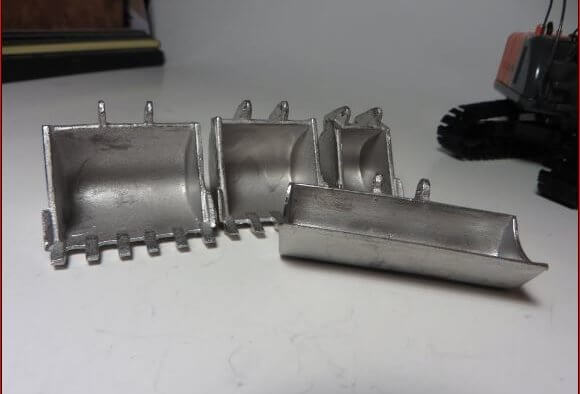Secure excavator buckets and attachments before transportation
Hire & Rental Nov 25

The risks of transporting unsecured excavator attachments in a large excavator bucket has been highlighted by NT WorkSafe in a safety alert.
The alert follows a fatality earlier in the year when unsecured excavator attachments came loose during loading and struck the hire company worker.
The 30 year old worker loaded an excavator fitted with a batter bucket carrying with two smaller buckets and a single tine ripper.
The attachments were not secured before the excavator was manoeuvred onto the float for transportation.
During final positioning of the excavator onto the float, one of the smaller buckets dislodged from the batter bucket. It struck the worker who had come onto the float deck while the operator was still positioning the excavator.
NT WorkSafe said contributing factors included:
- Storing and transporting smaller attachments in the larger bucket unsecured is a widespread industry practice. It is common to see smaller attachments pre-loaded in the larger buckets ready for hire;
- The attachments were not secured to the batter bucket before the excavator was manoeuvred onto the float;
- There was no policy or procedure at the hire yard for customers to pick up and transport hired equipment.
Action required
- Mobile plant attachments should be restrained on the deck of the float as outlined in the Load Restraint Guide 2018.
- If smaller attachments are transported in a larger bucket, they must be securely restrained to the bucket carrying them.
- Before operating any mobile plant, the operator and any workers must establish a system of communication before any work starts, this system should:
- Stop workers from approaching the mobile plant until the operator has established visual contact and has signalled it is safe to approach.
- If an operator has signalled a worker to approach, the operator should stop the equipment, put it in a safe mode, and take their hands off the controls.
- If the operator loses sight of the worker, they should stop operations until they re-establish visual contact.
- Workers should never approach mobile plant and assume the operator can see them.
- Workers should never stand under or near a suspended load in case of equipment malfunction or operator error.
Further information
- How to manage work health and safety risks
- Model Code of Practice: Managing the risks of plant at the workplace (Safe Work Australia)
- Load Restraint Guide 2018 (National Transport Commission)
HRIA CoR training
All industry members can access the HRIA Chain of Responsibility Online Awareness Course via the HRIA website at hria.learnupon.com/store
The course helps teams understand and meet all Heavy Vehicle National Law (HVNL) CoR legislative requirements.










